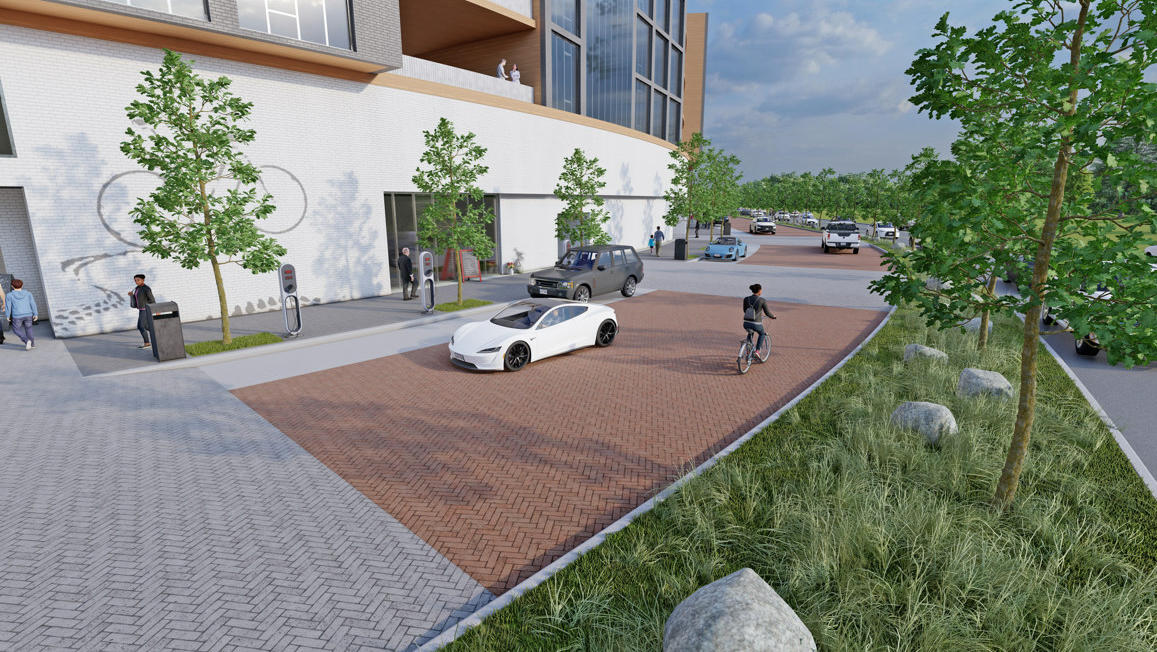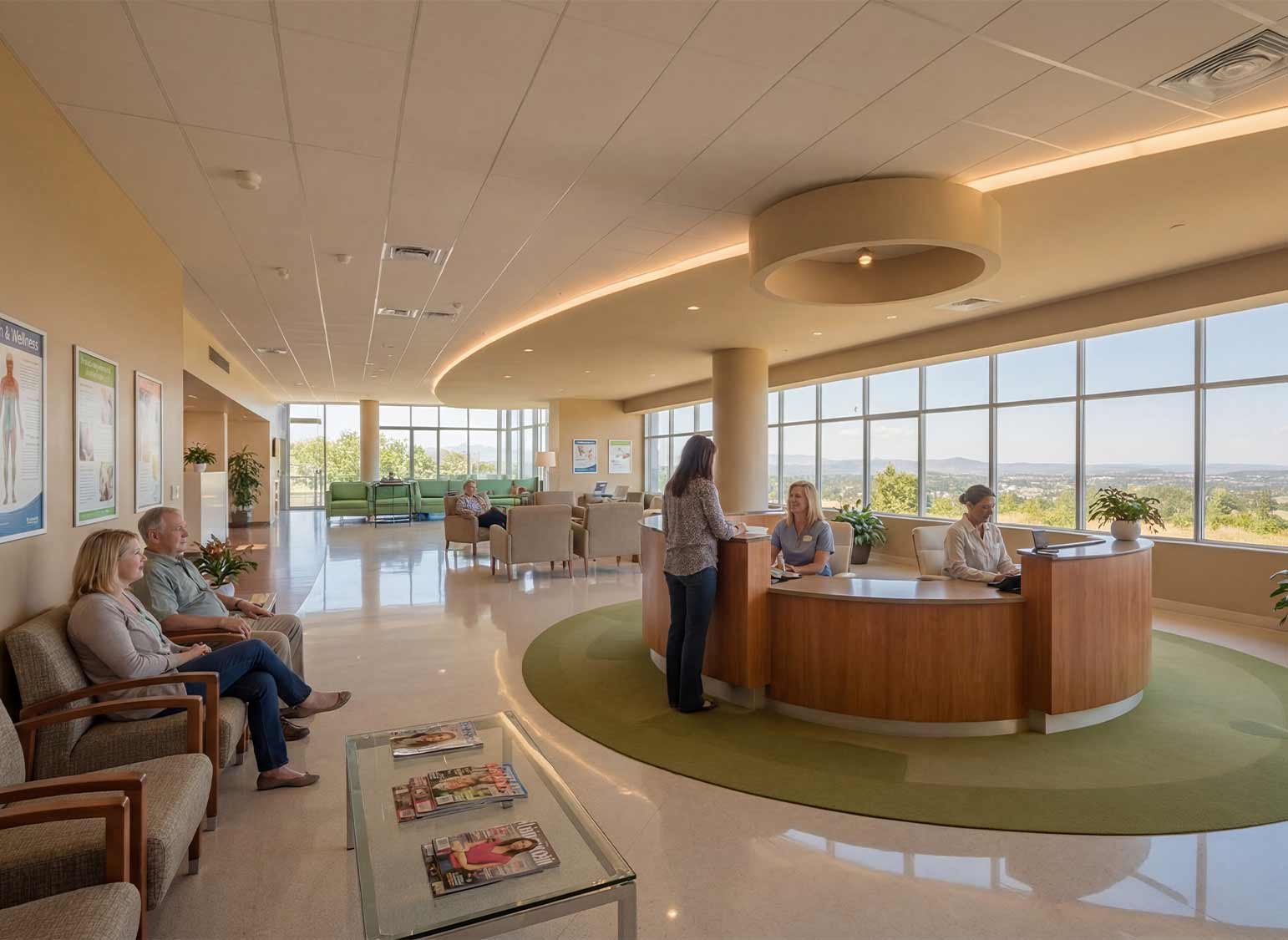How New-Market Solutions Can Elevate Established Civil Practices
Pinnacle Village is a multi-use development located in the heart of Rogers, AR. HFA began working on this project in 2017, leading the engineering efforts for this project with Ryan Gill, P.E., as the Engineer ofRecord and Diego Garcia, P.E., as the Lead Engineer. As we worked past the design phase and began permitting for this project, a fellow Civil team member,Kelsey Kreher, proved invaluable in collaborating with our team and the City of Rogers, keeping us on track until the eventual approval of the project in 2020.
From space-saving utility layouts to innovations in stormwater treatments, this project gave our team the freedom to combine a strategic mix of established civil practices with new-market solutions to meet the needs of our client. While the project is not yet vertical, our team has spent months laying a well-thought-out civil foundation for what will be a meaningful and diverse ecosystem for the surrounding community.
About Pinnacle Village Development
Our primary project objectives included civil design work and coordinating with the city of Rogers for design approval. Prior to our work, the site was roughly 30 acres of open green space located south of a growing retail and residential area. The developer's goal was turning the land into a mixed-use commercial and residential development that would coordinate aesthetically and functionally with the surrounding developments.
The property was divided into 13 lots and included public and private roads for ease of accessibility. Some of the requested development traits included walkability, access to the trail system, adequate parking, and the ability to accommodate different types of usage, such as retail spaces, offices, apartments, and hotel lodgings.
Priority: Making the Most Usable Space
One of the main priorities for our civil team was to maximize the space available throughout the development. The client did not want to give up buildable area to build an above ground pond, so we looked at other solutions for stormwater retention, like underground chambers or box culverts under the roads. However, the City of Rogers does not allow for those systems to be under the public roads.
HFA has worked extensively with the city of Rogers over the years and we had the privilege of working with them on this major mixed-use subdivision in an important pocket of retail, commercial, and residential amenities. Because of this long-term relationship, we were excited to pitch to them a new approach for this valuable development: permeable interlocking concrete pavements (PICP). This system removed the need for a retention pond and allowed more usable space for parking, trails, retail, living accommodations, and more. The city agreed to this approach and it turned out to be a great solution for this particular project.
Unique Utility Planning to Maximize Space
Because of the diverse use of the development, the infrastructure needs were extensive; therefore, most of the challenges came with designing the utilities in the smallest area possible that would still meet the requirements from the city as well as utility providers.
Typically, utilities are contained within the road right of way to prevent the need for additional dedicated easements; however, in our case, we had to come up with an alternative option that would maximize the usable space for buildings, pathways, parking, and the other amenities we wanted to include throughout the development.

PICP is a great option for a development with a limited amount of area, whether it be a new development or a redevelopment. With approximately 2.5 acres of the 30-acre development comprised of roads and parking space, the new paver system allows for us to store 4.10 acre-feet of stormwater under the roads and parking areas without having to have a typical above ground pond, which ultimately maximizes the remaining property acreage.
How does PICP work?
Essentially, solid concrete paving units are assembled in a consistent pattern, the joints in the pavement create openings in the pavement surface that allow water to freely enter the surface. The joints are filled with permeable aggregates that allow infiltration rates as high as 1,000 in/hr (Borst 2010). The pavers, or bricks, are placed on a bedding layer over the sub-base of open-graded aggregates that act as the retention pond, whether it's the street or a parking lot. Water then infiltrates into surrounding native soils and excess stormwater eventually makes its way into the under drain system, which conveys the runoff into the existing storm sewer system.
As you can imagine, PICP provides multiple advantages to a development, such as elevated aesthetics, improved water quality measures, and additional space saving options.

For a newer, less traditional approach such as PICP and others, the costs up front can be more but there may be distinct advantages down the line. For Pinnacle Village, the advantages include:
- more useable, rentable space with higher quality aesthetics
- lower long-term maintenance costs such as mowing and pond maintenance
- less likelihood of vandalism or damage from residents andpatrons
- lower risk of human accidents or injuries
Getting Ahead of Drainage Issues
Drainage issues can put a major damper on a project; therefore, it's important to consider any potential obstacles early.
To fully understand Pinnacle Village's impact on the existing infrastructure's capacity, we conducted a sewer study and worked closely with the city's engineers to ensure we would not overload the system.We also designed a water distribution system and sewer collection system to support all future development of the project.
Structurally, we had to ensure that the stand-up curb wouldn't collapse inside the roadway by adding bracing at the intersections and areas where grade changes occur. We also provided impermeable barriers at intervals throughout the system to slow down the water and increase our detention time. This allows for a smaller discharge into the existing storm water system.
For our lead engineer, Diego Garcia, the most exciting part of this project was understanding all the possible solutions to overcome the challenges of the project and determining the best design to achieve the best result, which included this new stormwater detention approach that the PICP system provided.
'The tricky part was that most design software doesn't actually design that particular detention system,' recalls Garcia. 'I had to go back to the drawing board and figure out a way of designing it without having the specific option in our software. I had to rely on my studies of groundwater hydrology to figure out how to do just that.'
Civil Tips for Maximizing Space
If you are looking to explore new ways to maximize your buildable area footprint or your project's square footage, Garcia compiled a few crucial factors to keep in mind:
- Allow extra space for utilities above and beyond your jurisdiction's requirements for landscaping.
- Most cities require you to provide street trees, not only for aesthetics, but also for pedestrian shading while accessing the sidewalks.
- Spacing and planning is crucial'you will often need to work with your city or local jurisdiction to ensure that trees are not planted over certain utilities because of root system interference.
- If it is not possible to circumvent utilities when planting trees, research species that have shallow root systems that do not pose a problem to the utilities underneath.
- Think about how your project can enable more sustainability and more desirable community gathering spaces.
- Get ahead of potential construction and design challenges.






.jpeg)

(1).webp)
.jpeg)

.jpeg)



